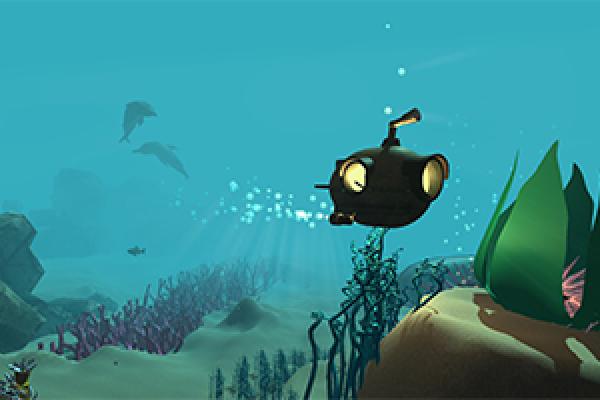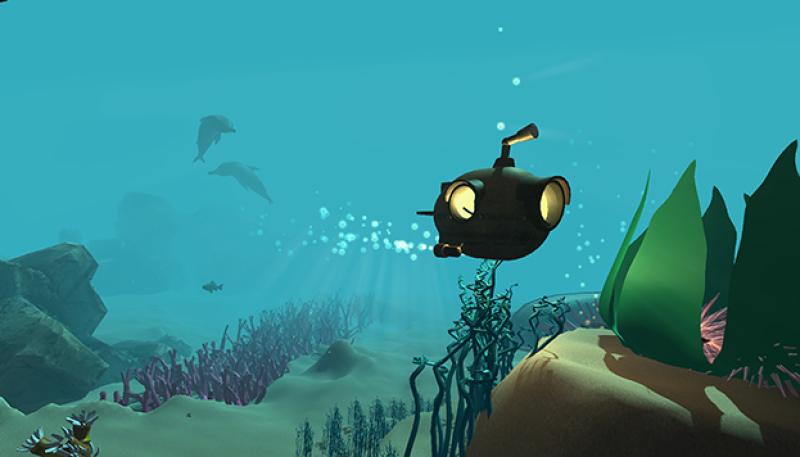Voxel Bay: ACCAD Students Partner with Nationwide Children’s Hospital to Create Virtual Reality Game to Comfort Young Patients

A pilot is underway for the virtual reality game, Voxel Bay, at the comprehensive hemophilia treatment center at Nationwide Children’s Hospital. The game was specifically designed to distract and comfort young patients during infusions and other procedures.
The partnership between the hospital and Ohio State’s Advanced Computing Center for the Arts and Design (ACCAD) has resulted in a first-of-its kind virtual reality world of penguins, pirates and hermit crabs.
In a unique and innovative approach to gaming, patients can control the game with their breath, head movements and gaze, so they remain still during treatment. The breathing exercises are designed to help them relax during medical procedures.
Jeremy Patterson, lead of User Experience Technology R&D at Nationwide Children’s, was the head project designer. “I have made lots of games and know what appeals to kids and what doesn’t, but creating something that has actually helped children have a better patient-experience, there is nothing greater than that,” said Patterson.
ACCAD Partnership
Alice Grishchenko, design MFA student, and John Luna, dance MFA student, have been studying game design at ACCAD and have been engaged in an internship with Nationwide Children’s Hospital, leading to the development of Voxel Bay.
Patterson guided the graduate students through this conceptual and implementation process to create the virtual reality game. Most of the games center around calming, watery environments, such as an underwater playground, an island-hopping dragon and a boat trip on a lazy river.
“Virtual reality can be very effective in treating pain and anxiety,” said Grishchenko. “These are soothing, calming environments for the children to explore. These are magical worlds that we’ve created.”
Luna used his dance skills to make the virtual experience comfortable for the children. “I translated a couple of my anti-motion-sickness techniques from dancing into the virtual space and they seem to be working effectively,” said Luna.
“Without John and Alice, none of this would have been possible,” Patterson said. “Their knowledge is beyond their years of experience and their insights are keen. ACCAD is one of the only places where cross-discipline, creative and design-oriented thinking is ingrained as part of the culture.”
Voxel Bay: ACCAD partners with @nationwidekids hospital to create #VR game to comfort young patients #ASCDaily
Outcomes
Charmaine Biega, RN, a nurse clinician for nearly 30 years, has watched her patients endure hundreds of needle sticks for infusions and other procedures, which can mean tears, frustration, wiggling and — in some cases — lifelong anxiety. But when she administered 6-year-old Brody Bowman’s infusion this month, he was doing something she had never seen him do before: having fun.
“The feedback we have gotten so far has been really positive,” said Amy Dunn, MD, director of hematology. “As ‘One Team’ we designed an approach that is truly engaging and immersive for kids and is customized to their needs, and we believe it will really make a difference in their treatment and outcomes.”
The pilot study, funded by a grant from the National Hemophilia Foundation, is currently testing the feasibility of integrating the virtual reality technology into the clinic setting. The team is also collecting preliminary data on usability and likeability from parents, patients and nurses.

